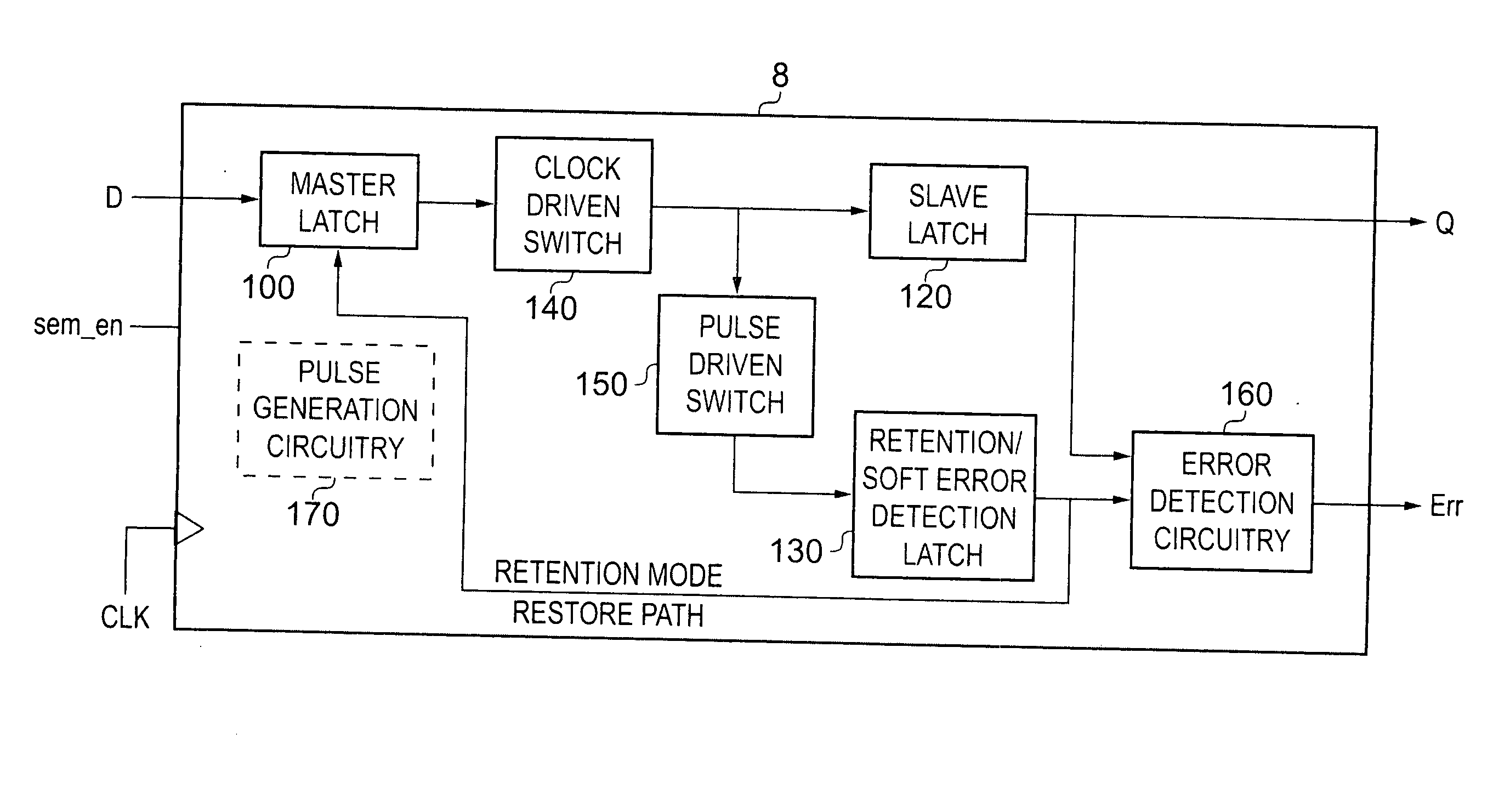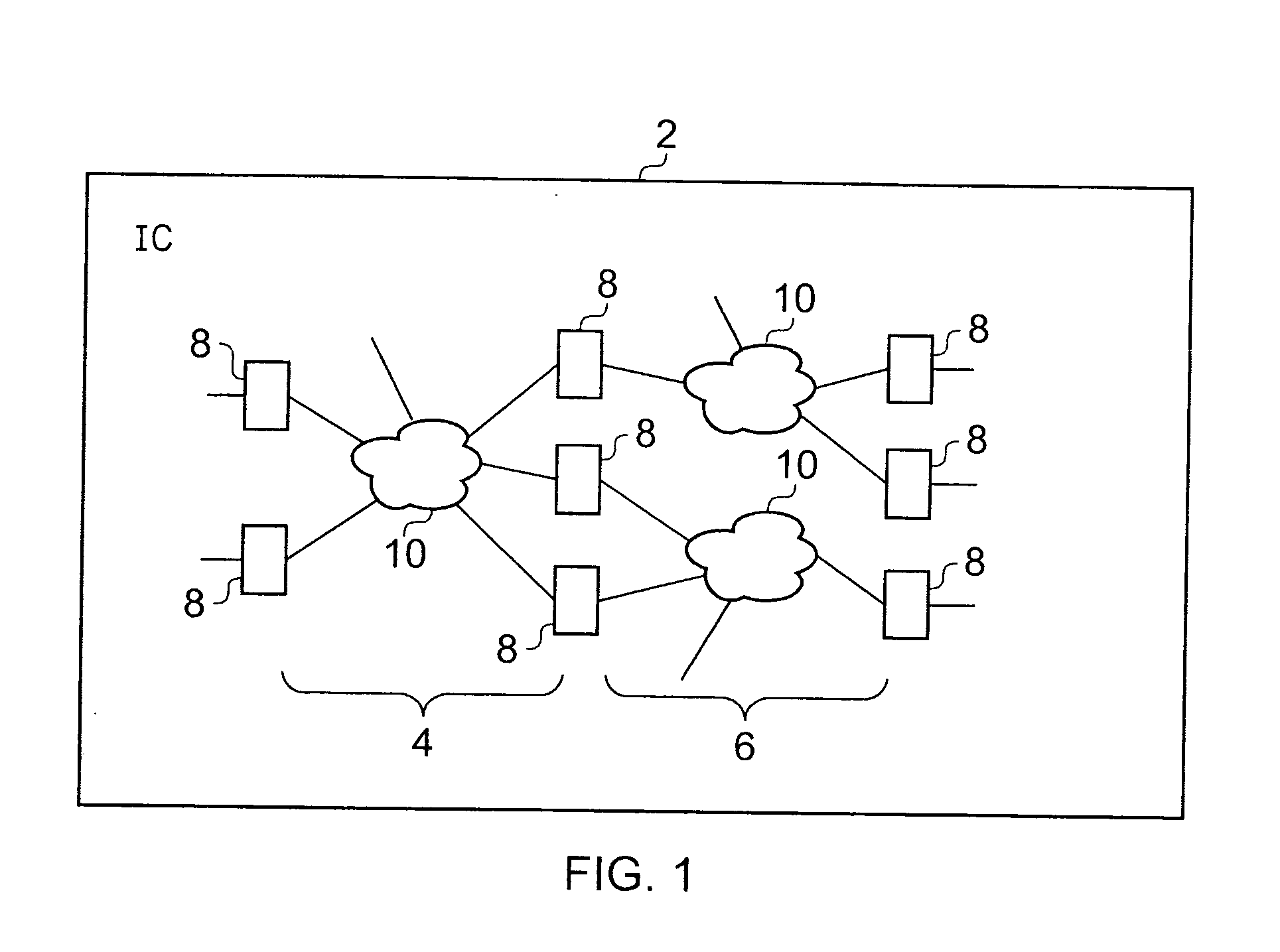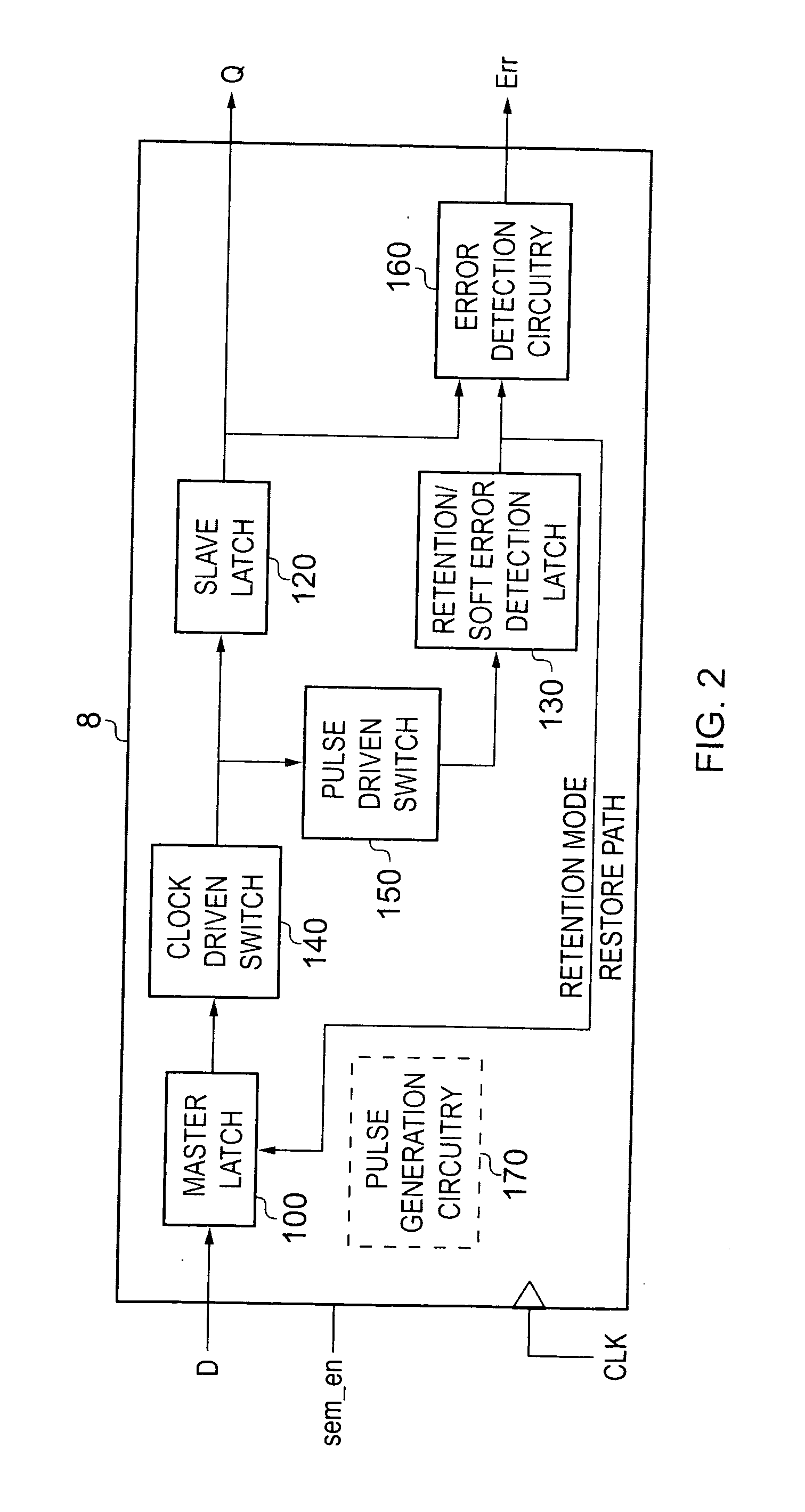Single Event Upset error detection within sequential storage circuitry of an integrated circuit
a technology of integrated circuits and error detection circuits, applied in the direction of transmission, instruments, electric digital data processing, etc., can solve the problems of inability to apply sequential storage circuits, inability to detect and correct errors in multiple bits, and prohibitive computational and storage overhead, so as to reduce the likelihood of error detection circuits, reduce the likelihood of errors, and be more robust to soft errors
- Summary
- Abstract
- Description
- Claims
- Application Information
AI Technical Summary
Benefits of technology
Problems solved by technology
Method used
Image
Examples
Embodiment Construction
[0043]FIG. 1 shows an integrated circuit 2 including pipeline stages 4, 6 extending between sequential edge-triggered storage circuits 8 which may be in the form of flip-flops. Between the sequential storage circuits 8 are respective instances of combinatorial logic circuitry 10, which serve to receive signals from one or more preceding stages and generate signals to be passed to one or more succeeding stages. The period of time between the capture of signal values by the sequential storage circuits 8 for successive clock periods is the time that is available for the combinatorial logic circuitry 10 to evaluate its inputs so as to generate its outputs. Embodiments of the present invention provide a new design for the sequential storage circuit 8, which can detect SEUs occurring within the sequential storage circuit due to neutron or alpha particle strikes on the sequential storage circuit.
[0044]FIG. 2 is a block diagram schematically illustrating a sequential storage circuit in acco...
PUM
 Login to View More
Login to View More Abstract
Description
Claims
Application Information
 Login to View More
Login to View More - R&D
- Intellectual Property
- Life Sciences
- Materials
- Tech Scout
- Unparalleled Data Quality
- Higher Quality Content
- 60% Fewer Hallucinations
Browse by: Latest US Patents, China's latest patents, Technical Efficacy Thesaurus, Application Domain, Technology Topic, Popular Technical Reports.
© 2025 PatSnap. All rights reserved.Legal|Privacy policy|Modern Slavery Act Transparency Statement|Sitemap|About US| Contact US: help@patsnap.com



